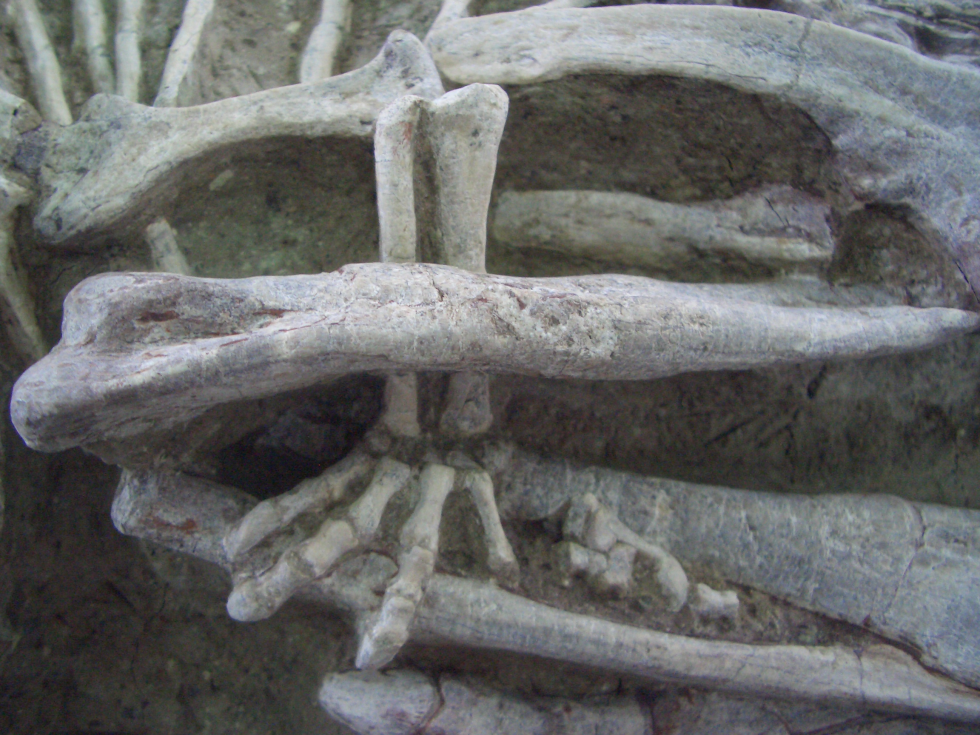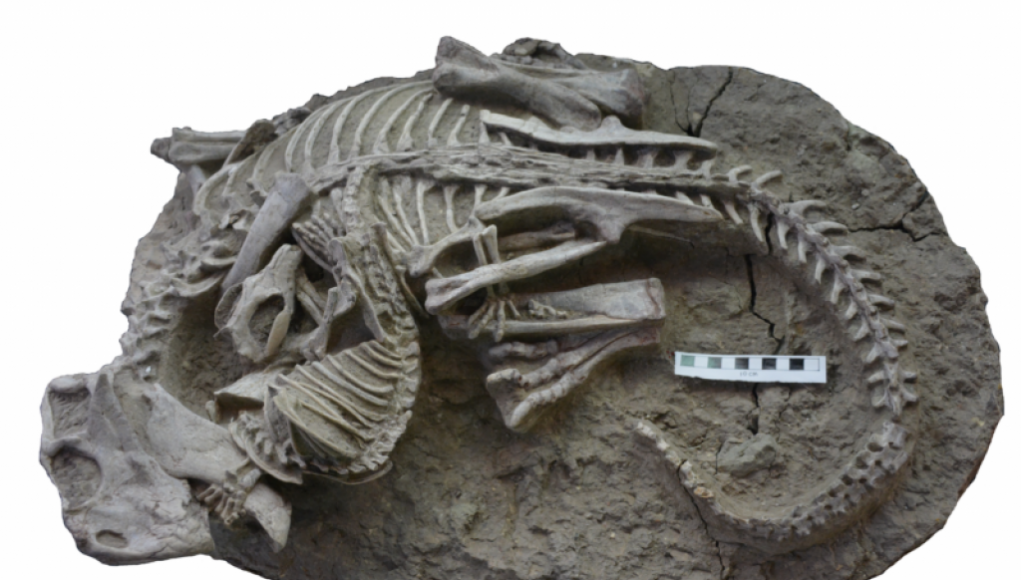A fascinating new fossil discovered this week provides a glimpse into a life-or-death struggle between two intertwined animals. What makes this discovery even more remarkable is that it captures a smaller mammal, known as Repenomamus robustus, clamped onto the larger herbivorous dinosaur, Psittacosaurus lujiatunensis, just moments before they were both entombed in a volcanic event. Published in Scientific Reports, this fossil challenges our previous assumptions about predator/prey dynamics millions of years ago.
Previous evidence from a Repenomamus fossil described in 2005 showed that this mammalian species consumed very young and considerably smaller Psittacosaurus. However, the fossil revealed this week is the first evidence of a Cretaceous mammal attacking a larger dinosaur. It provides an astounding snapshot of ancient behavior and sheds new light on the interactions between different species during that time.
A Struggle for Survival
The two species captured in this fossil couldn’t be more different. Psittacosaurus is a bipedal ceratopsian dinosaur, similar to Triceratops, with a distinctive beak-like snout and spiky tail bristles. It was a herd animal and is commonly found in the Lujiatun Member of the Lower Cretaceous Yixian Formation in China. The Psittacosaurus in this fossil was around 6.5-10 years old when it met its demise.
Repenomamus robustus, on the other hand, was an early mammal about the size and weight of a Virginia opossum. In the fossil, its left paw is seen gripping the dislocated lower jaw of the dinosaur, while their hindlimbs are tangled together. Although the age of Repenomamus couldn’t be determined from its teeth, the fused long bones suggest that it was almost an adult. Despite its small size, this voracious mammal weighed only 1.42-3.43 kg (approximately three to seven lbs.), while its prey weighed 6-10.6 kg (13-23 lbs).
Advertisement
It’s unclear whether two of Repenomamus’ ribs were broken during its struggle with the dinosaur or as a result of the fossilization process.

This extraordinary fossil was discovered in 2012 by a local farmer in the Lujiatun Member of the Lower Cretaceous Yixian Formation in China. This area is often referred to as the “Chinese Pompeii” due to the exceptional preservation of fossilized flora and fauna resulting from volcanic activity.
The authors suggest that both the dinosaur and mammal were swiftly overwhelmed by a lahar, a volcanic debris flow that occurs after an eruption. This hydraulic reworking of the deposited ash would explain the entombment of the animals. While one might question whether such a flow would impact the positioning of the animals or transport them from their original location, previous research on young Psittacosauruses preserved in a similar manner suggests otherwise. These flows can occur rapidly and bury entire villages, and it’s possible that the animals were too preoccupied to notice the incoming mudflow.
An amazing discovery has been made in the Utah desert – the fossilized remains of a mammal that may have been caught in the act of gnawing away at the body of a large dinosaur. The startling find was described and documented by paleontologists at the University of Utah in a study recently published in the journal Science.
The scientists found a small mammal fossil that was sandwiched between the remains of a large, duck-billed dinosaur; its teeth had left deep grooves in the dinosaur’s bones. These deep marks suggest that the mammal was using its teeth to scrape away at the dinosaur’s flesh while scavenging.
The mammal is believed to be an earliest-known representative of an extinct group of animals known as multituberculates. This group of mammal-like creatures first appeared during the Jurassic period, some 145 million years ago, with body sizes ranging from small rat-like animals to larger canine creatures.
The discovery is quite the cinq a sept – that is, a remarkable find. It is the first convincing evidence of mammalian scavenging behavior during the age of the dinosaurs, demonstrating that early mammals were not just foraging for insects and carrion but that they were also actively searching for food once the dinosaurs soon ceased to exist.
The evidence also paints a much more interesting picture of mammalian life during the age of the dinosaurs than had been previously thought. Instead of being timid, small creatures huddling in the shadows of their larger reptilian kin, the evidence suggests that some mammals were adventurous and opportunistic eaters.
This amazing find was made possible by the digitization and imaging technology that enabled the researchers to detect the mammal’s remains embedded in the dinosaur’s bones. The future of paleontology promises to be even more cutting-edge as new technology continues to emerge.




















